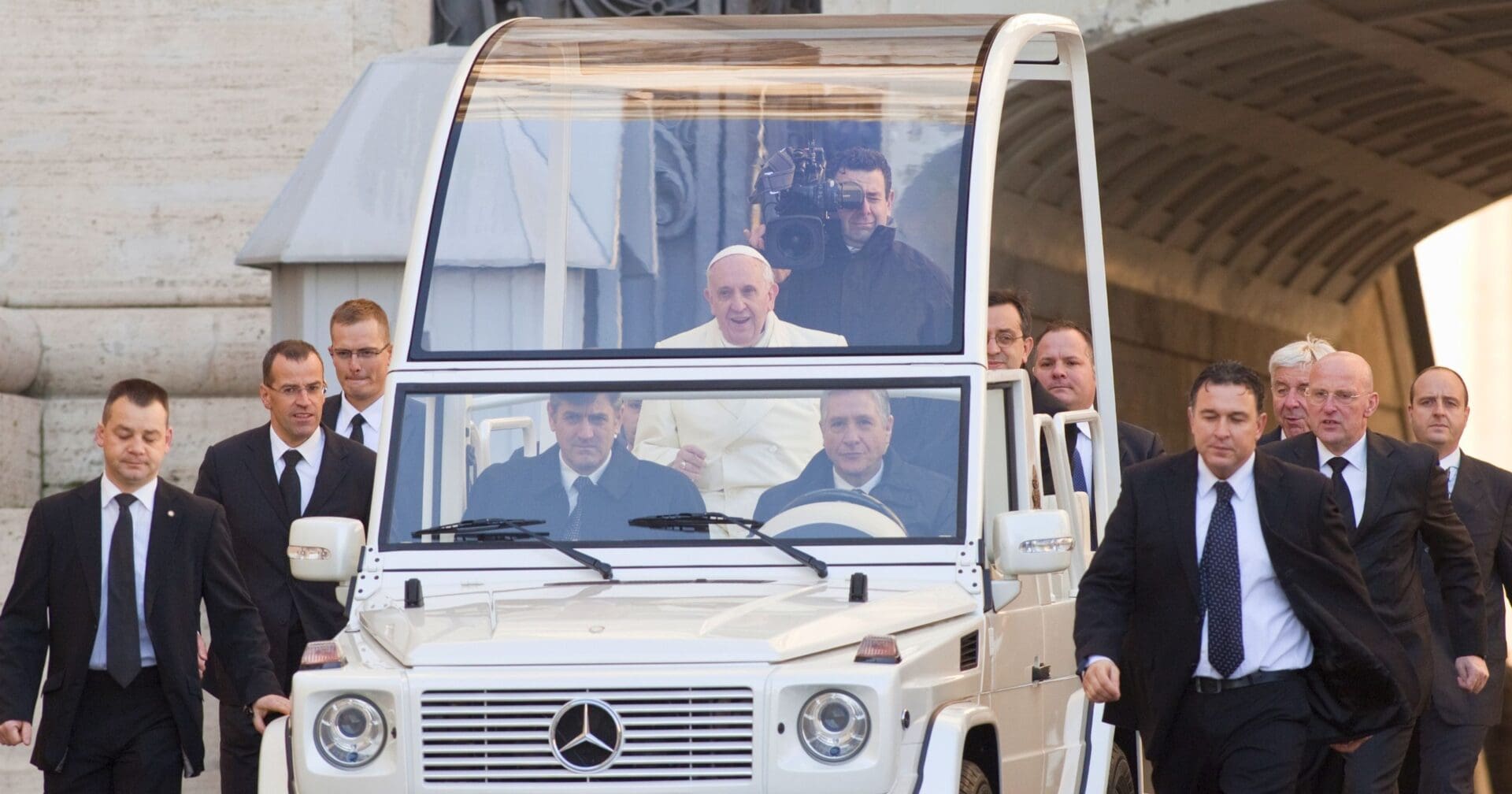The Popemobile is one of the most recognizable and well known symbols associated with the Pope. Beginning with Pope Paul VI’s visit to New York City in 1965 riding on a modified Lincoln Continental, every Supreme Pontiff since has used some variation of an automobile when travelling and making public appearances to allow them to be more visible to large crowds. However, the Popemobile is a recent invention in the history of the Church as the primary method of transportation. How then did previous popes travel and make their appearances before the creation of the first popemobile?
Prior to the first ride by Pope Paul VI in 1965, popes would often make their formal public appearances on a sedia gestatoria, or gestatorial chair. Literally meaning “chair for carrying” in Italian, the sedia gestatoria is a ceremonial throne that popes were carried on by the shoulders of the Sediari, the chair-bearers of the Pope. The throne consisted of a ornately decorated silk armchair attached to a footrest. On each side of the foot rest, or suppedaneum, are two golden rings which long rods pass through allowing twelve footmen to carry the throne on their shoulders.
The gestatorial chair was used to carry the pope during formal celebrations, transporting them to Saint Peter’s Basilica and the Lateran Basilica. The tradition of carrying the pope on the throne to a papal coronation ceremony can be traced back centuries, to the time when Roman consuls would be carried throughout the city after their election. Pope John Paul I was the last pope to use the gestatorial chair, and Pope John Paul II discontinued its use.
Prior to the 1800s, popes generally did not travel far beyond the Vatican. However, the need for long distance travel arose which gave rise to the papal carriage. Papal carriages were upholstered with red velvet and intricately decorated with gold plumes, doves, and other iconography. The first papal carriage was created for Pope Leo XII in 1826 for his trip to Berlin. After his Berlin trip, the papal carriage was used several times until its last use in 1870, when Pope Pius IX went to the Basilica of Santa Maria del Popolo.
Another form of papal transportation before the popemobile was via train. In 1849, Pope Pius IX traveled for the first time on a railroad from Portici to Pagani and was enamored with the new invention. When he returned to Rome, he began the construction of a railway network within the papal states. In 1859, he made his journey voyage from the Porta Maggiore train station to Albano, near Castel Gandolfo using the papal railroad car. Following his first trip, carriages were created to serve different purposes. One had open windows to deliver blessings to the people, one had closed windows when travelling with clergy for meetings, and another even included a full chapel.
Traditionally, popemobiles have been purpose made vehicles usually covered in bullet resistant glass. Today, Pope Francis shows a preference for simply styled cars. On the night of his election, he returned with his fellow cardinals by a minibus rather than the papal limousine. When travelling within Vatican City, he uses a small Ford Focus from the Vatican motor pool.
Editorial credit: giulio napolitano / Shutterstock.com















[…] Before the popemobile, how did popes get around? In the pope train, of course. […]
What piqued my curiosity was how previous popes traveled and appeared before the advent of the Popemobile. The article suggests that other means of transportation were used in Geometry Dash World, but I’d still like to know more about the specific methods used.